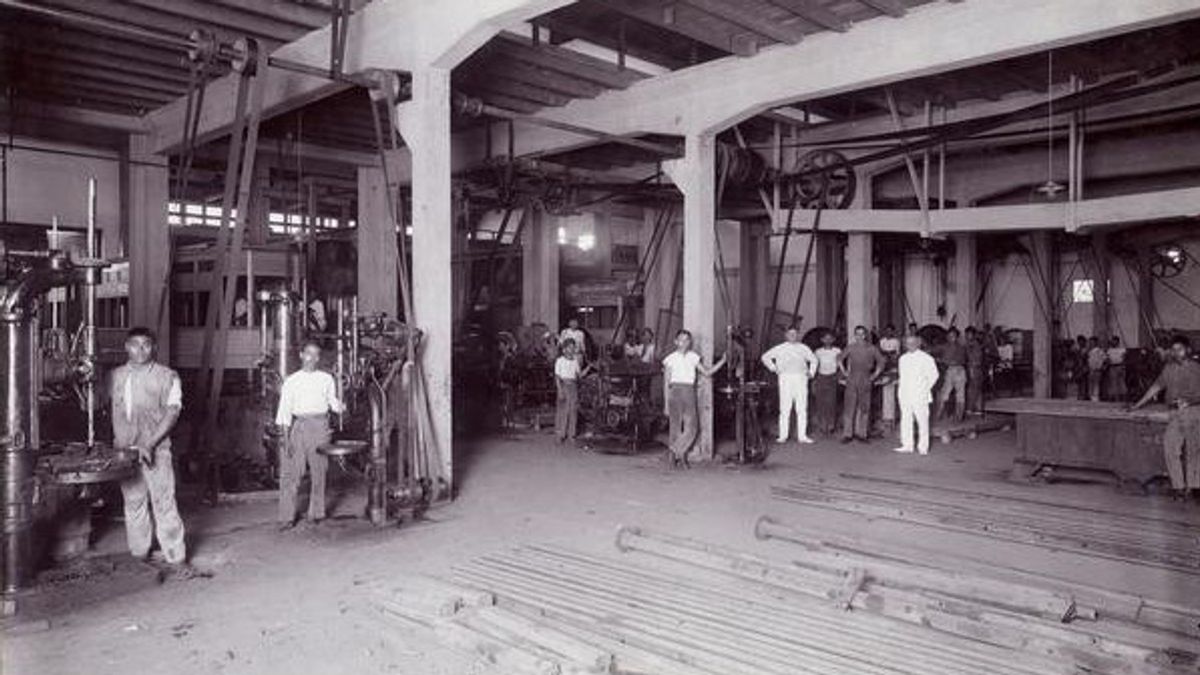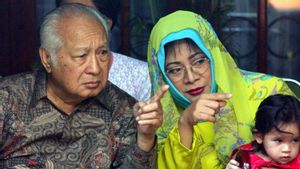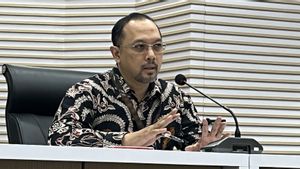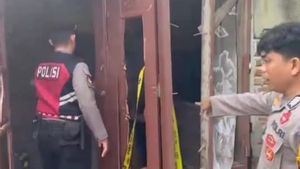JAKARTA - The labor movement in the Dutch East Indies emerged when there was an increase in the price of goods from 1910 to 1912 in the area. This is because the increase in the price of these goods has not been matched by an increase in labor wages. According to the newspaper De Locomotief, the edition of March 18, 1913, the prices of basic necessities that increased were rice by 30 percent, potatoes by 25 percent, sugar by 9 percent, and cooking ingredients by 90 percent.
This was exacerbated by the entry of World War I in 1914. Of course the economy of the Dutch East Indies workers continued to decline. So that it triggers the workers to go on strike to demand an increase in their wages.
At the end of World War I in 1918, the condition of the Dutch East Indies people did not improve, they lived on very little income. Quoted from Tan Malaka in the Mass Action, he explained the labor wages from Mr. Yeekes in De Opbouw in 1923 that the average income of workers per year is f. 196 (196 Gulden).
The income still has to be deducted by taxes, so their average monthly income is only f. 13 (13 guilders). Meanwhile, from Liem Thian Joe's notes in his book History of Semarang 1416-1931 (From Sam Poo's Dzamannja to Kong Koan's Dzamannja). The price of one picul of rice f. 14 (14 guilders), while the price of sugar reached f. 16 (16 guilders).
The condition was exacerbated by the layoffs of workers and the difficulty of finding work.
Apart from the impact of the post-World War I economic downturn, this was also the result of other factors, such as the import of various basic necessities being hampered because there were fewer ships, most of the Dutch transport ships at that time were used by the British to transport war needs.
In the midst of these conditions, the Sarekat Islam in Semarang, which adopted a Marxist ideology, held a general meeting on February 10, 1918 in the Semarang square, the meeting was attended by around 3000 members. Quoted from the report on the 12 February 1918 edition of Sinar Djawa, the general meeting resulted in several decisions which were written in a letter and would be submitted to the Governor General of the Dutch East Indies, such as demands for a reduction in the price of pericul rice to f. 10 (10 guilders), reduce exports of sugar cane, tobacco, tea, coffee so that the needs of the people in the country can be met. The letter was signed by Semaoen as chairman of the Sarekat Islam Semarang and Kadarisman as Secretary.
It was not only the Sarekat Islam that moved to protest the economic conditions at that time. The Marxists who are members of the Vereniging van Spoor en Tramweg Personeel (VSTP) together with the Indische Sociaal Democratische Vereniging (ISDV), held a general meeting which was also held in the Semarang city square on February 17, 1918. The total members of the two organizations who attended were around 7000 people. , they also demanded a reduction in the price of rice.
Interestingly, this meeting was not only attended by the sons of the earth, but also from various ethnicities, such as Chinese and Europeans. Quoted from Liem Thian Joe's book, The History of Semarang 1416-1931 (From Sam Poo's Dzamannja To Kong Koan's Reverence). Among the key figures speaking at the VSTP and ISDV general meetings, Darsono, Sneevliet and Semaoen spoke in Malay, while Van Burink and Baars spoke in Dutch.
After the series of general meetings, Communist ideology, which was incessant with anti-imperialism and capitalism slogans, was increasingly followed by the public, especially the workers. In order to build this awareness, propaganda is carried out in various ways, such as through the media, general meetings, speeches, novels, and even songs.
The increasingly severe poverty of the workers, and then the incessant movements of Marxism and Communism which are considered to be defending the interests of the workers, have strengthened the workers' determination to carry out a mass strike.
On January 21, 1922, there was a mass strike by employees of the pawnshop office in Semarang. This was triggered because the day before the strike, a worker was ordered by his boss to lift goods, but he refused, there was a dispute between the two. The pawnshop workers' refusal was not without reason, because in 1919 there was a regulation that the removal of goods was carried out by gardeners, not other than that.
The news of the dispute in the pawnshop office reached Tan Malaka, at the Sarekat Islam Semarang office, Tan Malaka gave his response regarding the attitude of the Dutch who he considered insulting the son's land.
"The Dutch maids here, even though they only work there to polish shoes, here don't like lifting even a little. If you lift heavy things, ask for help from the housekeeper, babu, chef. Likewise the big ladies. "His children who are still young have also been educated to call jongos, babu, chef. It is possible that the child is still in the womb and has been taught this custom," said Tan Malaka, as quoted by the Sinar Hindia newspaper, January 23, 1922.
However, the strike of workers at this pawnshop did not last long, because the Dutch East Indies government threatened dismissal for those who were carrying out a strike, even many of them refused to take action.
The lack of optimality in the pegadain labor strike resulted in a weakening of the spirit of workers' resistance, especially when Tan Malaka was exiled to the Netherlands on charges of being the provocateur of the strike action.
While another movement figure, Semaoen, who went to Moscow, Russia in November 1921 to attend an international communist congress, returned to the Dutch East Indies in May 1922 and found the spirit of the labor movement weak. To revive that spirit, Semaoen held another workers' meeting on June 25, 1922. Quoted from Petrus Blumberger in his book De Nationalistische Beweging in Nederlandsch Indie, the results of the meeting decided that unions were merged under one umbrella, namely Persatoean Vakbonden Hindia (PVH). The organizations that are members of the PVH include Persatoean Employees of Boemipotera (PPPB), the Dutch Indies Goeroe Association (PGHB), Persatoean Goeroe Bantoe, VSTP, Personeel Fabriek Bond (PFB) so that the number of PVH members reaches 20,000 people.
Entering 1923, many companies made cost savings due to the increasingly chaotic economic situation of the Dutch East Indies.
John Ingleson in his book In Search of Justice, Workers and Unions in Colonial Java, 1908-1926, describes steps taken by companies to save expenses, by eliminating labor allowances, laying off workers, reducing 50 percent of employee housing rents, lowering job allowances and reducing overtime pay.
With the emergence of this very detrimental regulation, Semaoen met with the Staatsspoor leadership to ask that workers' allowances not be removed, but the meeting did not reach an agreement.
Finally Semaoen decided to carry out a strike action for all railroad employees in Semarang on May 9, 1923. Semaoen's secretary, Kadarisman, even called for a strike action with an even louder tone. If there are workers who are still working, it means that they eat your own blood.
The Dutch East Indies government, aware of this action, immediately took action. One day before the action took place, Semaoen was arrested and then jailed on charges of spreek delict or violation of public statements. Even Semaoen was not given the opportunity to visit his wife who was giving birth.
May 9, 1923, there was a general strike in Semarang, the city was deserted, rail transportation was hampered. This strike was not only carried out by railway workers, but also tram workers, market traders, sado workers, workshop workers and cart drivers. Another interesting thing is that the strike coincided with the month of Ramadan. Quoted from Sinar Hindia news, May 12, 1923. The struggle of the Prophet Muhammad was used as an example to fight the crimes of capitalism. The labor movement at that time considered capitalism a form of crime (Zondig Capitalism).
The workers' strike action in Semarang even spread to several other areas, such as Pekalongan, Tegal, Cirebon, Kertosono, Madiun and Surabaya.
The impact of this action clearly spread to economic problems, so the Dutch East Indies government imposed article 161 of the Dutch Indies KUPH, in which any figure deemed to have an important role was sentenced to prison. This strike ended at the end of May.
When the situation was pressed after the strike, VSTP admitted defeat by the actions taken by the Dutch East Indies government through a bulletin of the VSTP central management. "Because of the harsh reaction, we have become weak in this resistance. So now we admit to being frank, with this the strike has not got any results," as quoted from the VSTP management bulletin archive attached to the Semarang resident's letter to the Governor General, June 8, 1923.
The English, Chinese, Japanese, Arabic, and French versions are automatically generated by the AI. So there may still be inaccuracies in translating, please always see Indonesian as our main language. (system supported by DigitalSiber.id)









